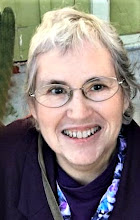Saturday, December 7, 2013
Reading For Craft
Writing
a Series
Not only does writing one novel require creativity, stamina, and
endurance to reach publishable quality, but writing a series can be like
juggling multiple eggs on an ice rink. Just one slip can create a crack that
runs throughout the whole series. Often writers don’t realize that one novel is
about to become a series and have to learn to balance along the way. Or read, Writing the Fiction Series: The Guide for
Novels and Novellas by Karen S. Wiesner.
Not only does this book fill in a long overdue gap in craft
skills for novel writers, but it also delivers. Although I knew a preview copy
was enroute, I couldn’t wait so purchased the kindle copy to get started. And I
stayed up very late my first night reading. This does not happen very often
with craft books. In fact only a few of the writing books I read make it to my
column.
Wiesner is also the author of First
Draft in 30 Day, and from First Draft
to Finished Novel. One ongoing feature of her books is her inclusion of practical,
accessible, worksheets and graphs. Organizing one novel can be daunting at
times let alone a series. Weisner skillfully blends the organizational skills
together into comprehensive sanity. Although, here I do need to note that the
sketches and outlines didn’t always show up well on the e-book version. The
print copy is much better at the design layout for easier reading.
In Writing the Fiction Series
she extends her additional resources first, by including ongoing advice and
encouragement from series authors and publishers across multiple genres, and
second, by making the full interviews available on her website. There are over
one hundred. This is a field that is vibrant and hungry for good writing. http://www.angelfire.com/stars4/kswiesner/WTSinterviews.html
And that is the key behind this book: writing a quality series.
Wiesner details the definitions, catalyst, styles, focus, organization, and
marketing required for any series by showing explicit examples, case studies
and stumbling blocks. She thoroughly examines and warns about the importance of
characters and consistency when writing across extended novels. On the surface
this might seem to be common sense, but in reality it is a danger that can sink
your series, and/or lose future readers.
I happened to be doing novella research of my own on three separate
series in different genres and applied Wiesner’s criteria. Some were written by
the same author and some by multiple authors. Each book did a good story
individually. Every series tripped up. One I tracked for location ties, one for
character, and one for premise, an ongoing mystery. The mystery series in
particular had all kinds of inconsistencies—the worst being the last book
mischaracterized an earlier murder altogether. Not a good way to finalize a
series and hope readers will return for the next.
Writing the
Fiction Series warns you of the potential landmines and shows you navigable routes
to write a sustainable high-concept fiction series and enjoy the process.
Advice that is long overdue. Advice that is fun to implement.
Share: Have you
ever stopped reading a series you really liked at the beginning? Why?
Read deep,
marcy
Subscribe to:
Post Comments (Atom)









No comments:
Post a Comment